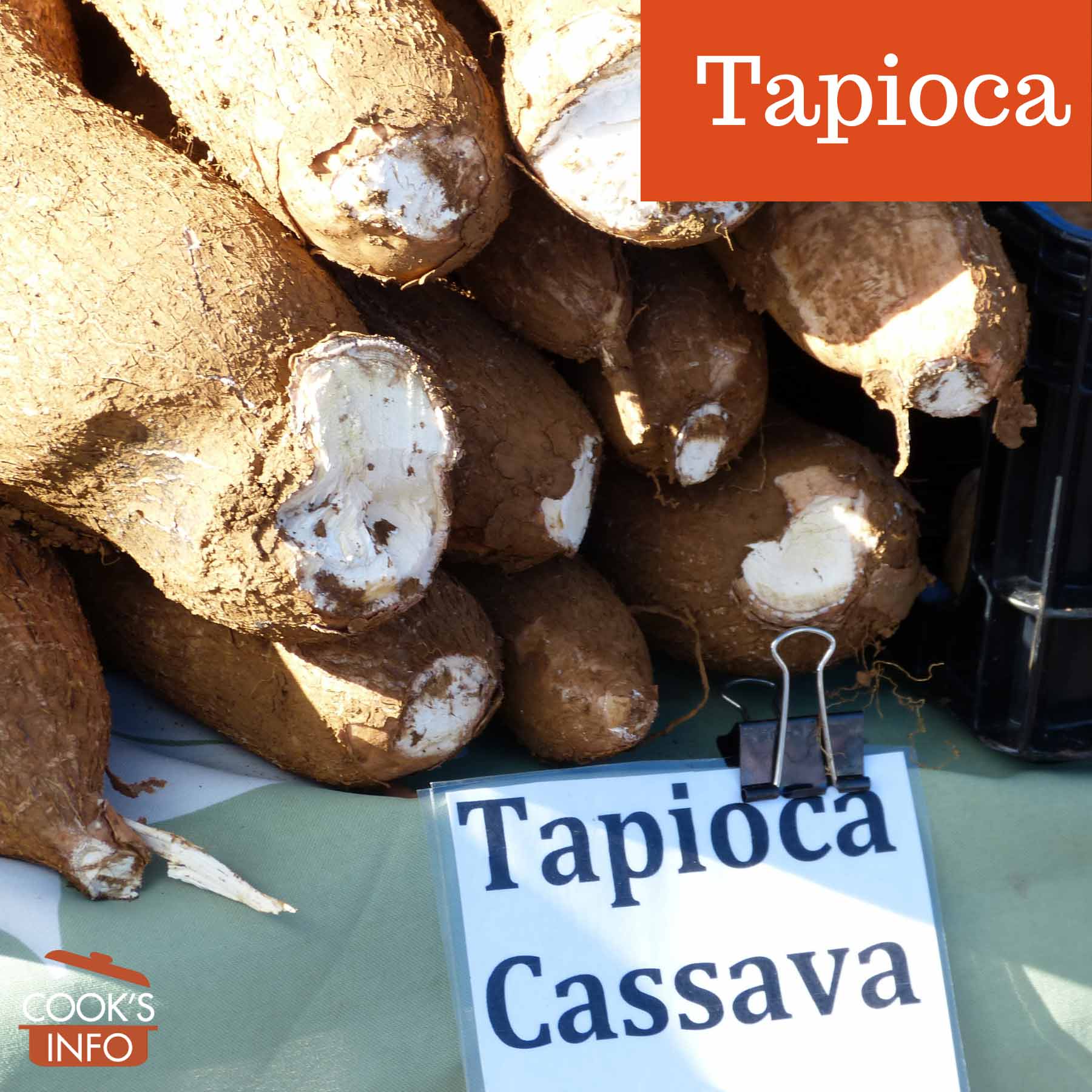
Cassava root, source of tapioca. Sue Salisbury / flickr / 2014 / CC BY 2.0
Tapioca is a starch.
It comes from a tropical plant root called “cassava“, which grows in Africa and South America. The starchy root is roasted, and ground.
Tapioca has little taste on its own, and is used instead for its thickening abilities.
Tapioca can be purchased in the following forms:
- tapioca pearls (also called “bead” or “granule”);
- instant tapioca (also called “granulated” or “quick-cooking”);
- tapioca starch (also called tapioca flour).
In a liquid, tapioca reaches its maximum thickening power at 85 C (185 F).
See also: Tapioca Day, Tapioca Pudding Day
Cooking Tips
Freezing does not affect tapioca, so it is a good thickener to use in foods that will be frozen.
Use where you want a high gloss, such as in fruit pies. It can look odd in a gravy.
Equivalents
1 cup tapioca pearls, uncooked = 175g / 6 oz.
History
Genuine tapioca disappeared from American grocery store shelves during World War Two, and was replaced by a sorghum-based product:
“Tapioca, an early casualty of the Japanese war, returns to the grocers’ shelves as an all-American product. It appears in the form of a boxed Minute Dessert made by the General Foods Corporation from an American grain, sorghum, this to replace Minute Tapioca which disappeared from the stores over two years ago.
Previously Java was our principal source of supply of tapioca starch taken from the root of the cassava. The new dessert is made from a sorghum starch but produces a pudding almost identical to the prewar kind. This new tapioca turns out thick and creamy, really delicious, and can be used in numerous pudding variations and as a thickening agent for pies. But don’t try using it to thicken a soufflé, or as a binder for meat loaf. Sorghum starch has certain differences from the starch of cassava and these differences must be considered in its cooking treatment. The home economists of the General Foods Corporation have worked out new recipes using the dessert, to replace the classic favorites which starred Minute Tapioca. A recipe folder accompanies each box and for happy results observe the rules to the letter.” — Paddleford, Clementine (1898 – 1967). Food Flashes Column. Gourmet Magazine. October 1945.
Language Notes
The name ‘tapioca’ comes directly from the word used by indigenous people in Brazil.

